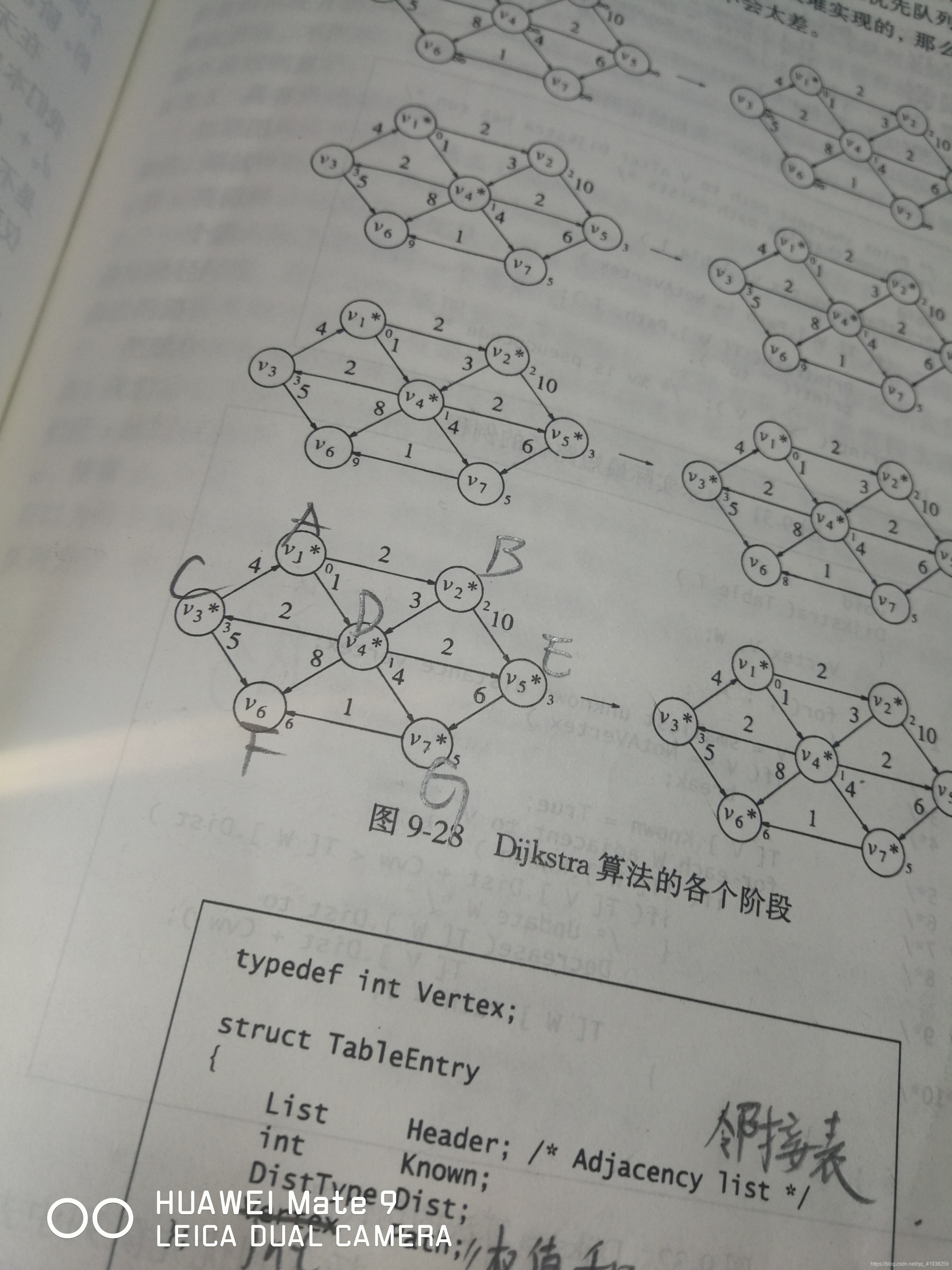老样子,三个文件
head.h
#pragma once
#include<iostream>
#include<stdlib.h>
#include<cstring>
using namespace std;adj.h
#pragma once
#include"head.h"
typedef struct edge
{
int adjvex;//编号,用于检索data
int weight;//用于存放权值
struct edge *next;//邻接表指针
}edgeNode;
typedef struct
{
char data;//节点的名字
edgeNode *first;//用于检索节点邻接表信息,如编号,权值,指向下个孩子的指针
}adj;
class adjListGraph
{
adj adjList[100];//邻接表表头,最多100个表头
int v, w;//v为顶点数,w为边数
public:
void createGraph(void);//录入图信息,存于邻接表
int locatex(char a);//检索节点名称,返回编号
void print(void);//打印所有邻接表
};
int adjListGraph::locatex(char a)
{
for (int i = 0; i < v; i++)
if (a == adjList[i].data)return i;
return -1;
}
void adjListGraph::createGraph(void)
{
int m, n;
edgeNode *e = NULL;
edgeNode *q = NULL;
cout << "依次输入顶点数与边数:" << endl;
cin >> n >> m;
v = n;
w = m;
cout << "录入邻接表信息:" << endl;
cout << "录入所有顶点的英文编号:" << endl;
for(int i = 0; i < n; i++)
{
cin >> adjList[i].data;
adjList[i].first = NULL;
}
cout << "录入邻接表信息,以‘起始顶点 被指向顶点 边权值’为格式:" << endl;
char a, b;
int cost;
for (int j = 0; j < w; j++)
{
cin >> a >> b >> cost;
int vertexA = locatex(a);//起始节点的编号
int vertexB = locatex(b);//被指向节点的编号
e = new edgeNode;
e->adjvex = vertexB;
e->next = NULL;
//头插法链表
if (adjList[vertexA].first == NULL)
q = adjList[vertexA].first = e;
/*
单链表标志性的连等写法。根据右结合,等同于
adjList[vertexA].first=e;
q=adjList[vertexA].frist;
*/
else
q = q->next = e;
}
}
void adjListGraph::print(void)
{
edgeNode *p;
p = new edgeNode;
for (int k = 0; k < v; k++)
{
cout << adjList[k].data << ":";
for (p = adjList[k].first; p; p=p->next)
cout << " " << adjList[p->adjvex].data ;
if (p == NULL)
cout << endl;
}
}main.cpp
#include"adj.h"
int main(void)
{
adjListGraph A;
A.createGraph();
A.print();
system("pause");
return 0;
}第一组I/O:

输入的拓扑图之这样的:

第二组I/O:

